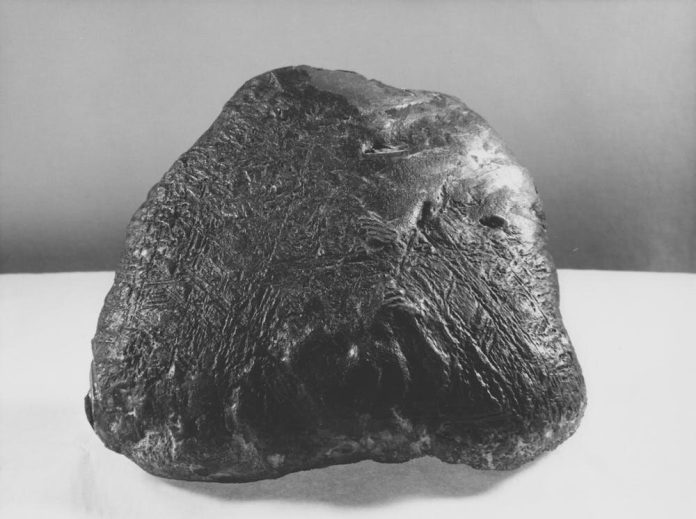
The sight of a fireball streaking across the sky brings wonder and excitement to children and adults alike.
It’s a reminder that Earth is part of a much larger and incredibly dynamic system.
Each year, roughly 17,000 of these fireballs not only enter Earth’s atmosphere, but survive the perilous journey to the surface.
This gives scientists a valuable chance to study these rocky visitors from outer space.
Scientists know that while some of these meteorites come from the Moon and Mars, the majority come from asteroids.
But two separate studies published in Nature today have gone a step further.
The research was led by Miroslav Brož from Charles University in the Czech Republic, and Michaël Marsset from the European Southern Observatory in Chile.
The papers trace the origin of most meteorites to just a handful of asteroid breakup events—and possibly even individual asteroids.
In turn, they build our understanding of the events that shaped the history of the Earth—and the entire solar system.
What is a meteorite?
Only when a fireball reaches Earth’s surface is it called a meteorite. They are commonly designated as three types: stony meteorites, iron meteorites, and stony-iron meteorites.
Stony meteorites come in two types.
The most common are the chondrites, which have round objects inside that appear to have formed as melt droplets. These comprise 85% of all meteorites found on Earth.
Most are known as “ordinary chondrites”. They are then divided into three broad classes—H, L and LL—based on the iron content of the meteorites and the distribution of iron and magnesium in the major minerals olivine and pyroxene.
These silicate minerals are the mineral building blocks of our solar system and are common on Earth, being present in basalt.
“Carbonaceous chondrites” are a distinct group. They contain high amounts of water in clay minerals, and organic materials such as amino acids. Chondrites have never been melted and are direct samples of the dust that originally formed the solar system.
The less common of the two types of stony meteorites are the so-called “achondrites”. These do not have the distinctive round particles of chondrites, because they experienced melting on planetary bodies.
The asteroid belt
Asteroids are the primary sources of meteorites.
Most asteroids reside in a dense belt between Mars and Jupiter. The asteroid belt itself consists of millions of asteroids swept around and marshaled by the gravitational force of Jupiter.
The interactions with Jupiter can perturb asteroid orbits and cause collisions. This results in debris, which can aggregate into rubble pile asteroids. These then take on lives of their own.
It is asteroids of this type which the recent Hayabusa and Osiris-REx missions visited and returned samples from. These missions established the connection between distinct asteroid types and the meteorites that fall to Earth.
S-class asteroids (akin to stony meteorites) are found on the inner regions of the belt, while C-class carbonaceous asteroids (akin to carbonaceous chondrites) are more commonly found in the outer regions of the belt.
But, as the two Nature studies show, we can relate a specific meteorite type to its specific source asteroid in the main belt.
One family of asteroids
The two new studies place the sources of ordinary chondrite types into specific asteroid families—and most likely specific asteroids. This work requires painstaking back-tracking of meteoroid trajectories, observations of individual asteroids, and detailed modeling of the orbital evolution of parent bodies.
The study led by Miroslav Brož reports that ordinary chondrites originate from collisions between asteroids larger than 30 kilometers in diameter that occurred less than 30 million years ago.
The Koronis and Massalia asteroid families provide appropriate body sizes and are in a position that leads to material falling to Earth, based on detailed computer modeling. Of these families, asteroids Koronis and Karin are likely the dominant sources of H chondrites. Massalia (L) and Flora (LL) families are by far the main sources of L- and LL-like meteorites.
The study led by Michaël Marsset further documents the origin of L chondrite meteorites from Massalia.
It compiled spectroscopic data—that is, characteristic light intensities which can be fingerprints of different molecules—of asteroids in the belt between Mars and Jupiter. This showed that the composition of L chondrite meteorites on Earth is very similar to that of the Massalia family of asteroids.
The scientists then used computer modeling to show an asteroid collision that occurred roughly 470 million years ago formed the Massalia family. Serendipitously, this collision also resulted in abundant fossil meteorites in Ordovician limestones in Sweden.
In determining the source asteroid body, these reports provide the foundations for missions to visit the asteroids responsible for the most common outerspace visitors to Earth. In understanding these source asteroids, we can view the events that shaped our planetary system.
Written by Trevor Ireland, The Conversation.



